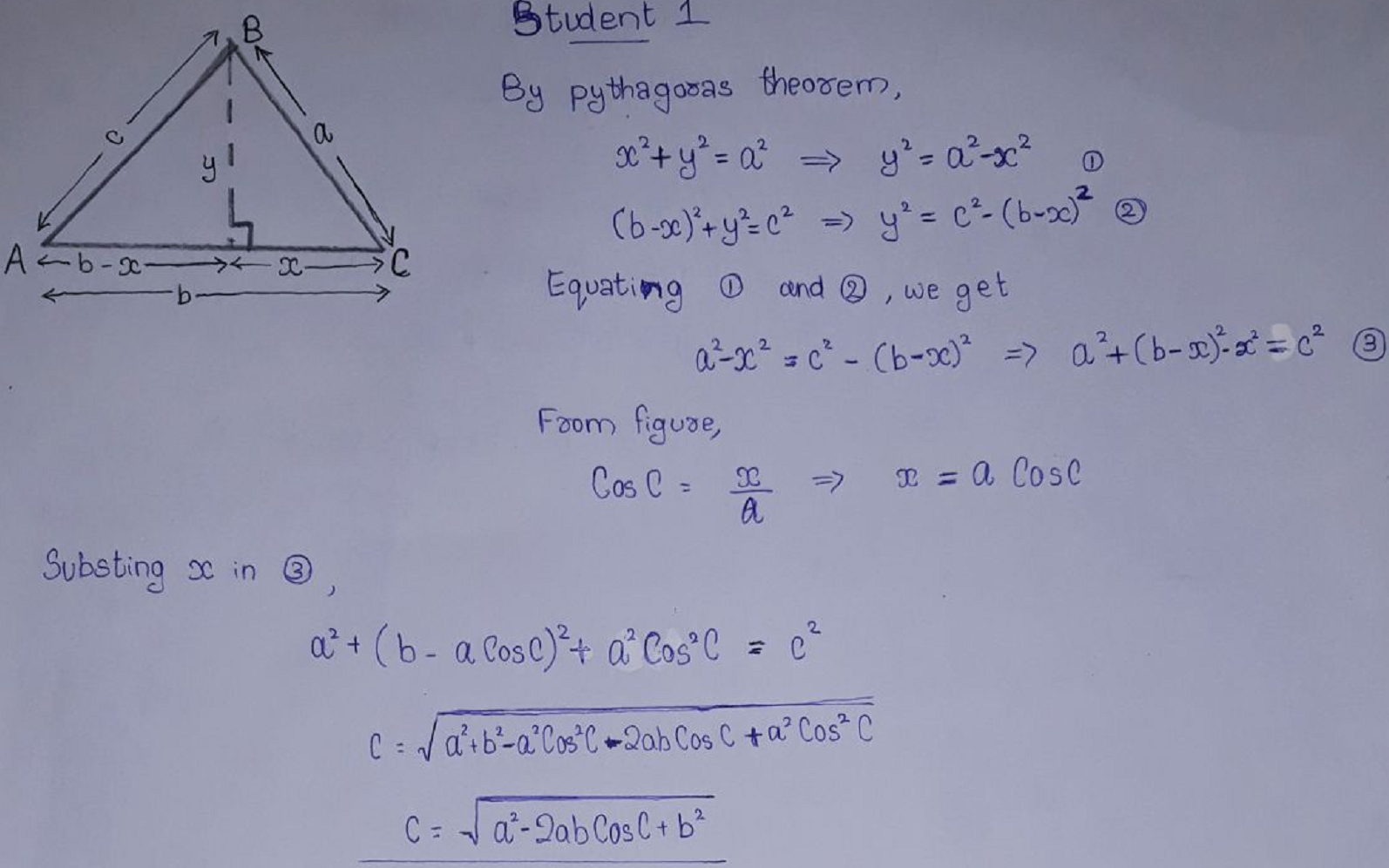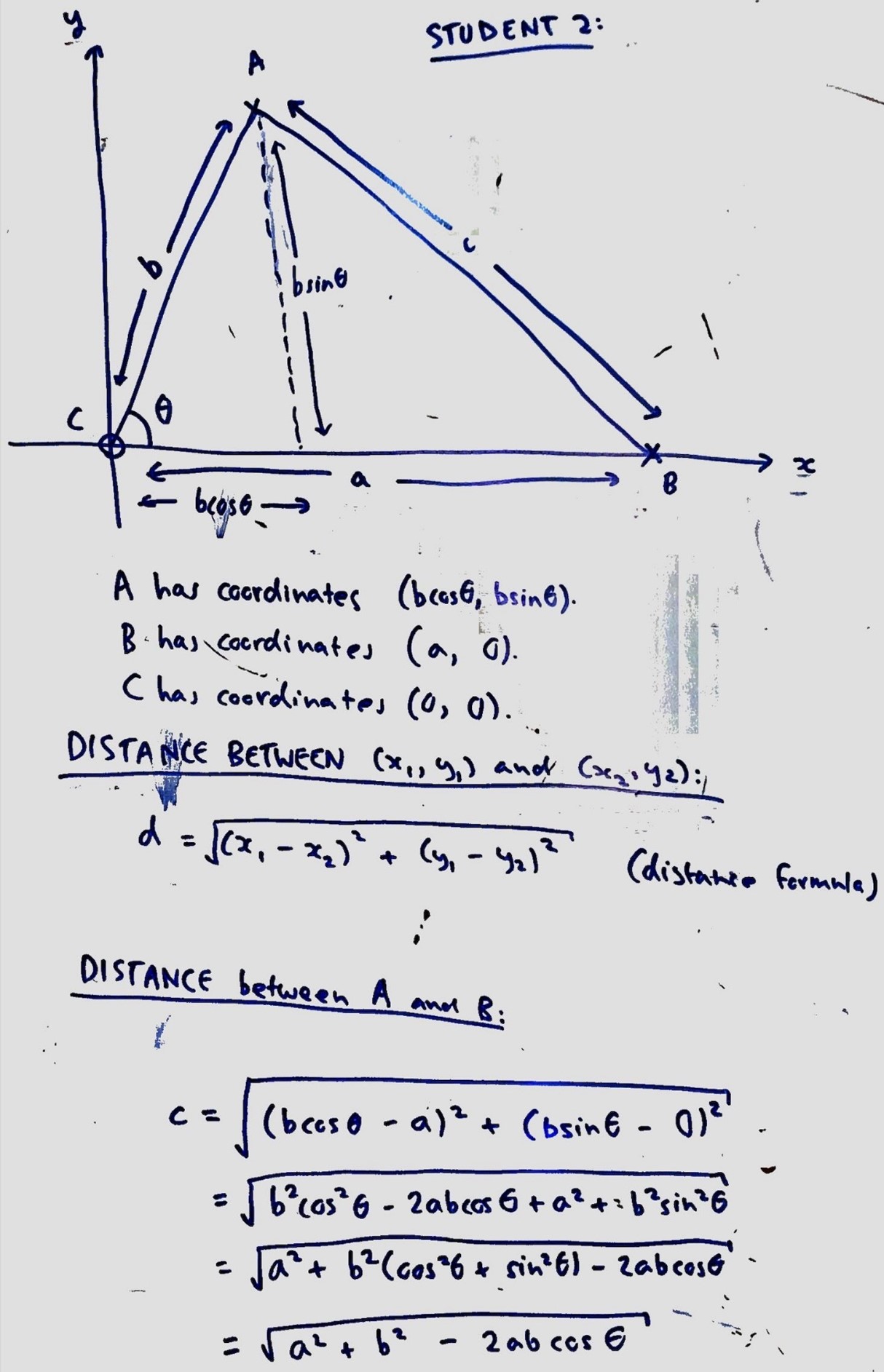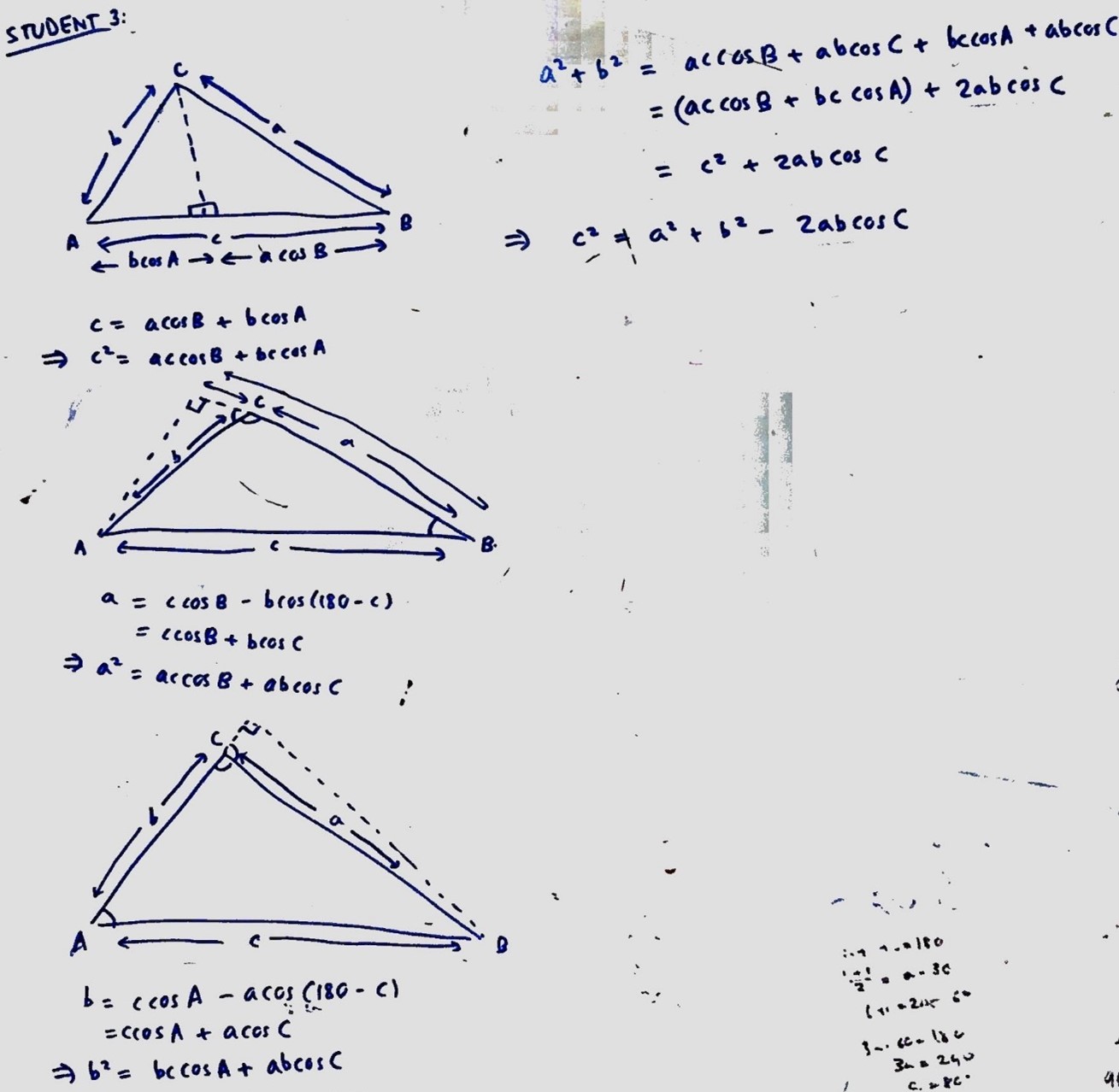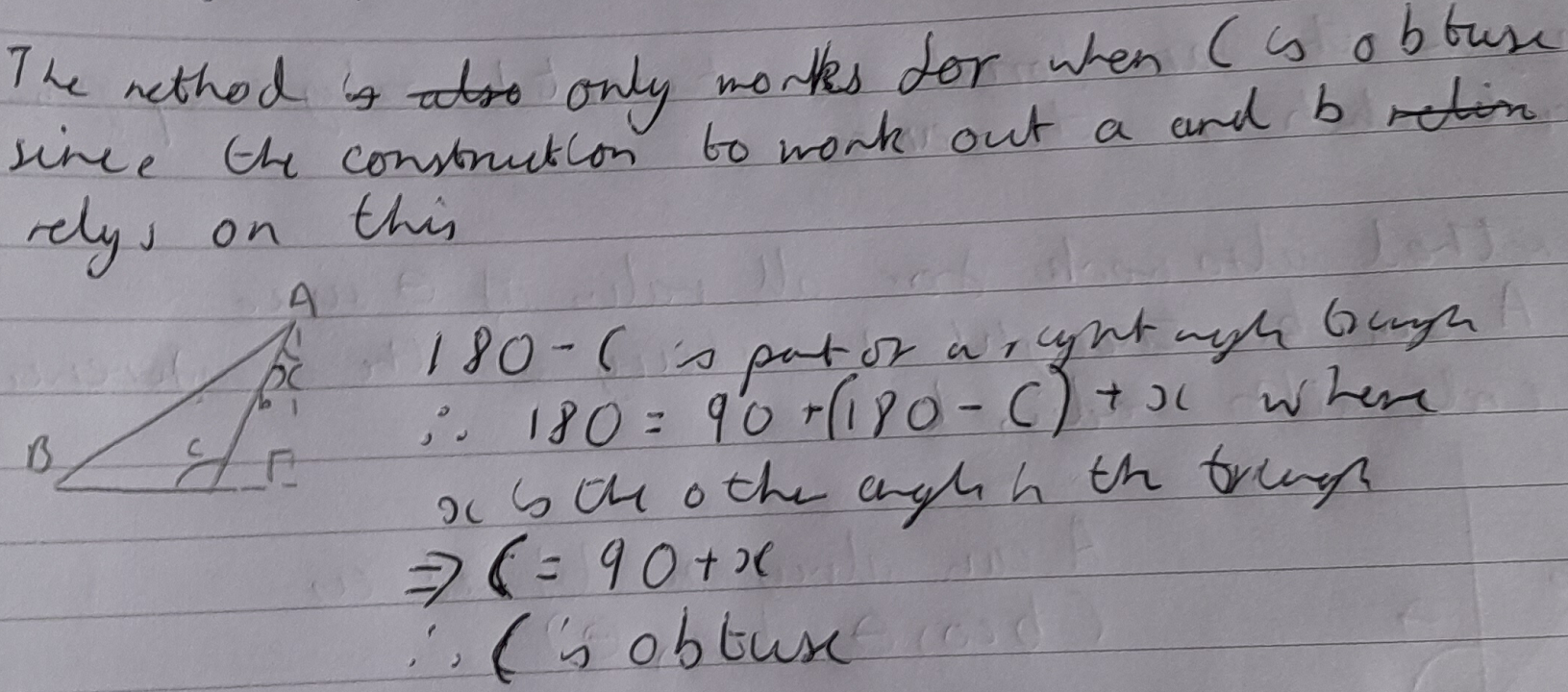Or search by topic
Number and algebra
Geometry and measure
Probability and statistics
Working mathematically
Advanced mathematics
For younger learners
Calculating with Cosines



- Problem
- Getting Started
- Student Solutions
- Teachers' Resources
Student 1
Gautham from Kendriya Vidyalaya SAP Perookada TVPM in India, Sam from Bedford school, Joshua from Bohunt Sixth Form in the UK, Soumya from Kings Maths School in the UK and Nicholas completed Student 1's method. Here is Sam's work (click on the image to see a larger version):
Not everyone's formula came out exactly the same. Gautham left the formula in a different way (click on the image to see a larger version). Can you see how the two are equivalent?
Nicholas thought about whether this method would work for obtuse-angled triangles:
Our method only works when C is acute since our initial construction involved a right angle triangle involving C and the angles in a right angle triangle must be less than 90.
This method be adapted for triangles where C is an obtuse angle. Can you work out how?
Student 2
Sam, Joshua, Nicholas, Soumya and Gautham all completed this method. Once again, they didn't all express the formula in the same way. Soumya got the same formula as Gautham (click on the image to enlarge):
Joshua got the same formula as Sam:
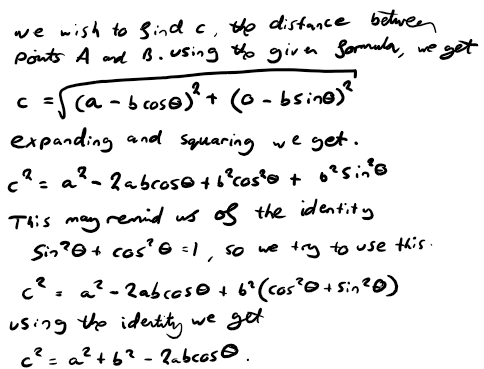
Once again, Nicholas also considered what might happen if C were obtuse (click on the image to enlarge):
Student 3
Sam, Joshua, Nicholas, Soumya and Gautham all completed the method. This is Soumya's work, which shows the third diagram (click on the image to enlarge).
In this case, C is obtuse. Nicholas concluded that this must always be the case (click on the image to enlarge):
What would happen if all the angles were acute? Try out the method in that situation - it still works!



